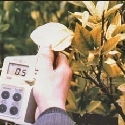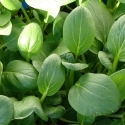22 Dec 2016
Fertilizing Patterns affect the Biodiversity of Weed Community and Wheat Growth
 The influence of fertilization on the species diversity of the weed community
The influence of fertilization on the species diversity of the weed community
Both fertilizing and weeding are important farming practices. The objectives of integrated weed management should be not only to increase crop yield, but also to reduce the risk of herbicides, and protect or improve the biodiversity of farmland weed communities for better farmland ecological environment. Therefore, the IPNI China Program project cooperators in Wuhan Botanical Garden of CAS hypothesized that appropriate and rational fertilization could benefit both crop productivity and biodiversity of farmland weed communities. To study the effects of different fertilizing patterns on the biodiversity of farmland weed community and their adaptive mechanisms, the indices of species diversity and responses of weed species and wheat were investigated in a 17 years long term field trial with winter wheat-soybean rotation. This long term field trial includes six fertilizing patterns with different fertilizer N, P and K application rates. The results indicated that wheat and the four prevalent weed species (Galium aparine, Vicia sativa, Veronica persica and Geranium carolinianum) showed different responses to fertilizing patterns in terms of density, plant height, shoot biomass, and nutrient accumulations. Each individual weed population exhibited its own adaptive mechanisms, such as morphological adaptation for adequate light and growth advantages. The PK treatment (pattern) had higher weed density, shoot biomass and Shannon-Wiener and Pielou Indices of weed community than those of N plus P fertilizer treatments. The N1/2PK treatment showed the same weed species number as in the PK treatment. It also showed higher Shannon-Wiener and Pielou Indices, although wheat yield lower than those in the NPK treatments. The negative effects on wheat yield could be compromised by simultaneous positive effects of weed communities in the fertilization treatment, which are intermediate in terms of effects on wheat and weeds.
更多资源
full article.pdfSize: 0.74 MB




